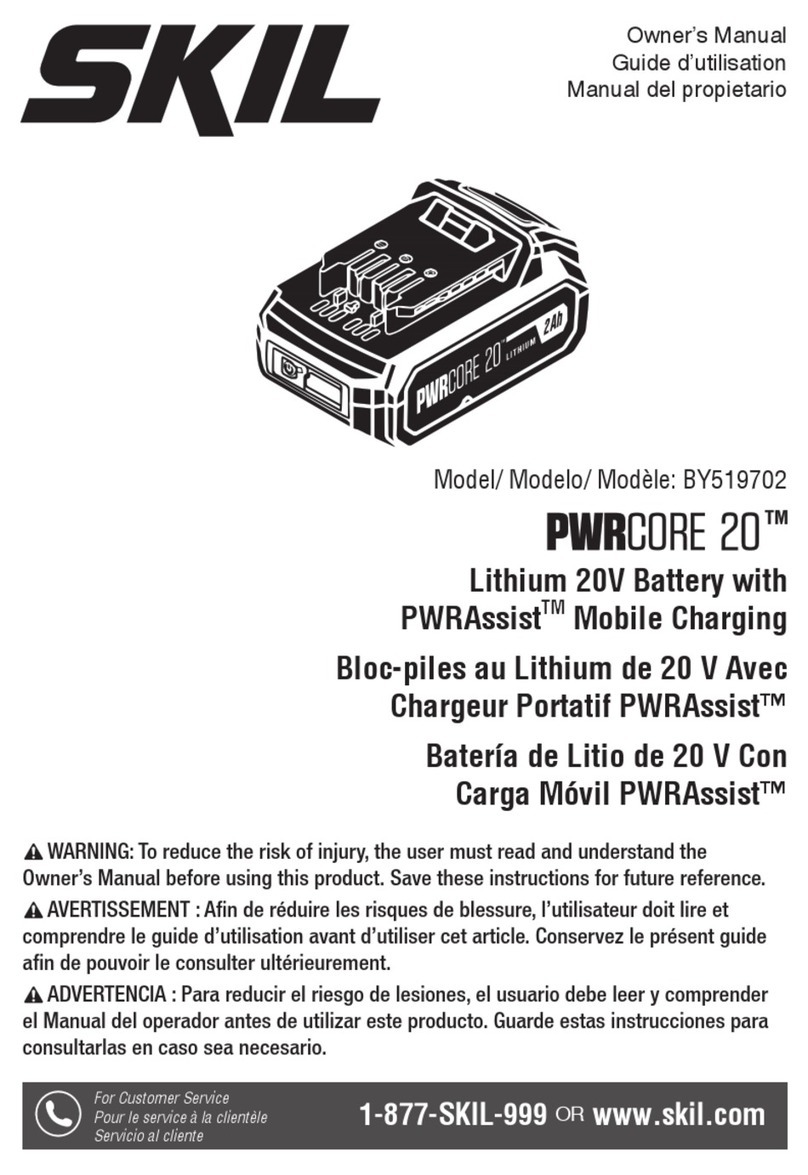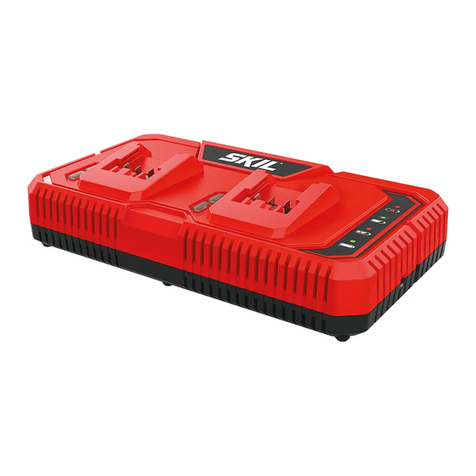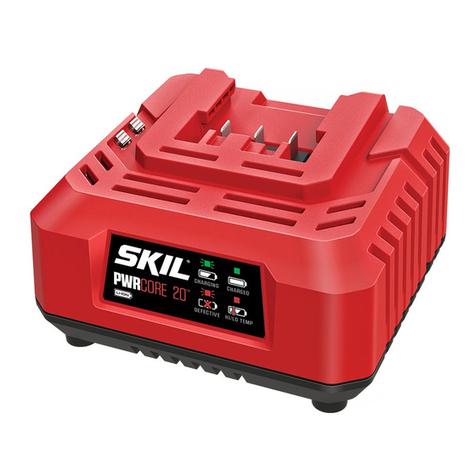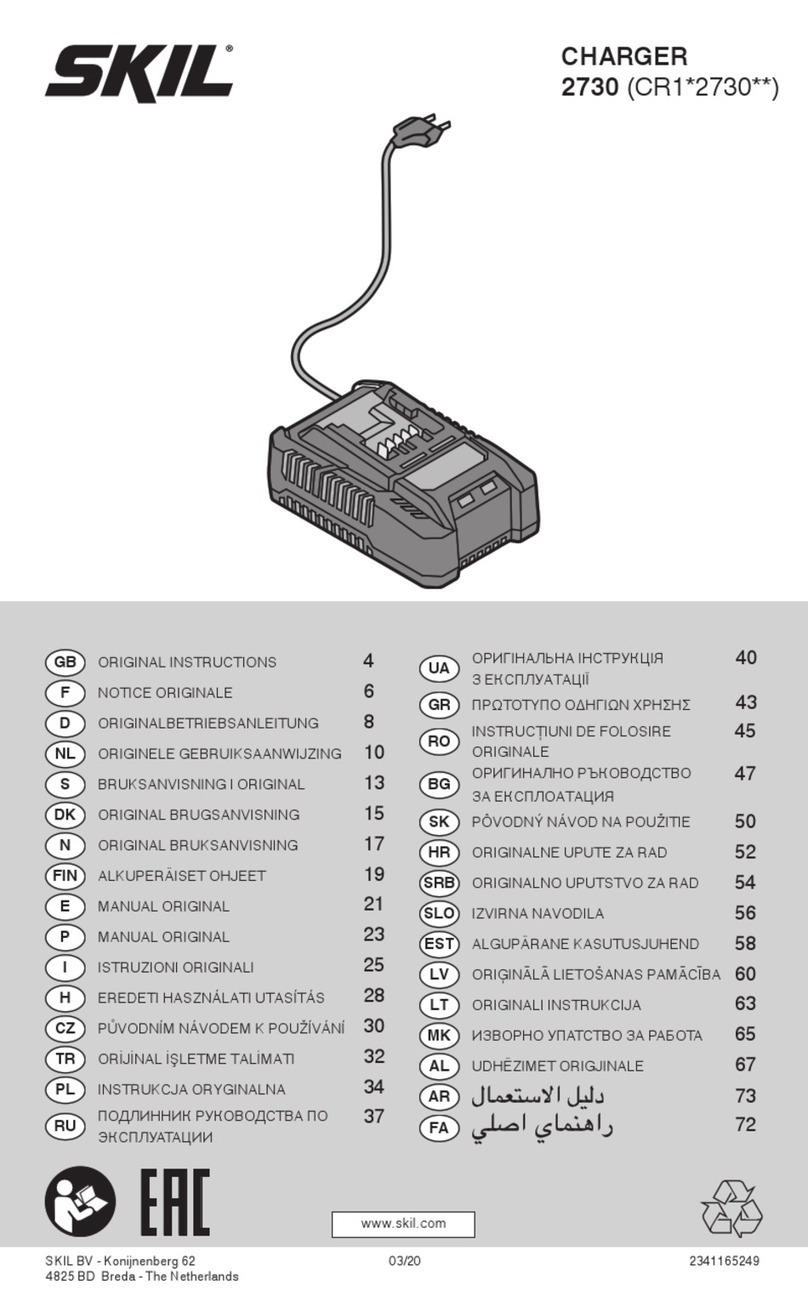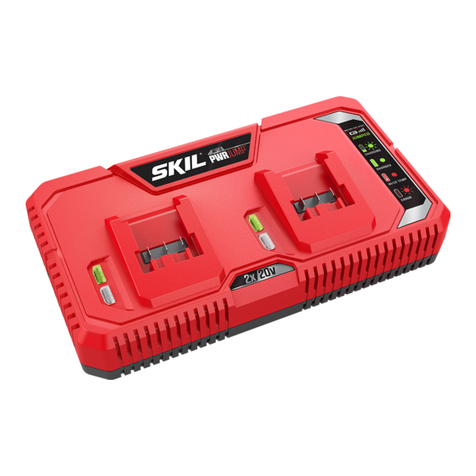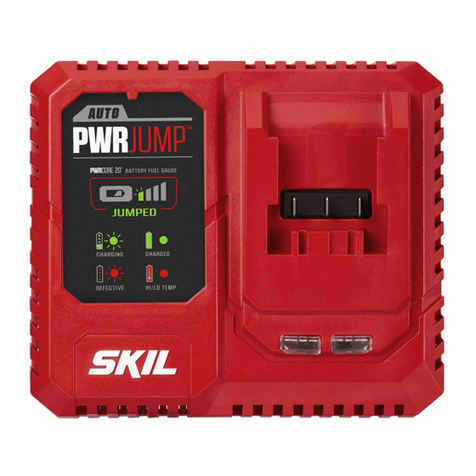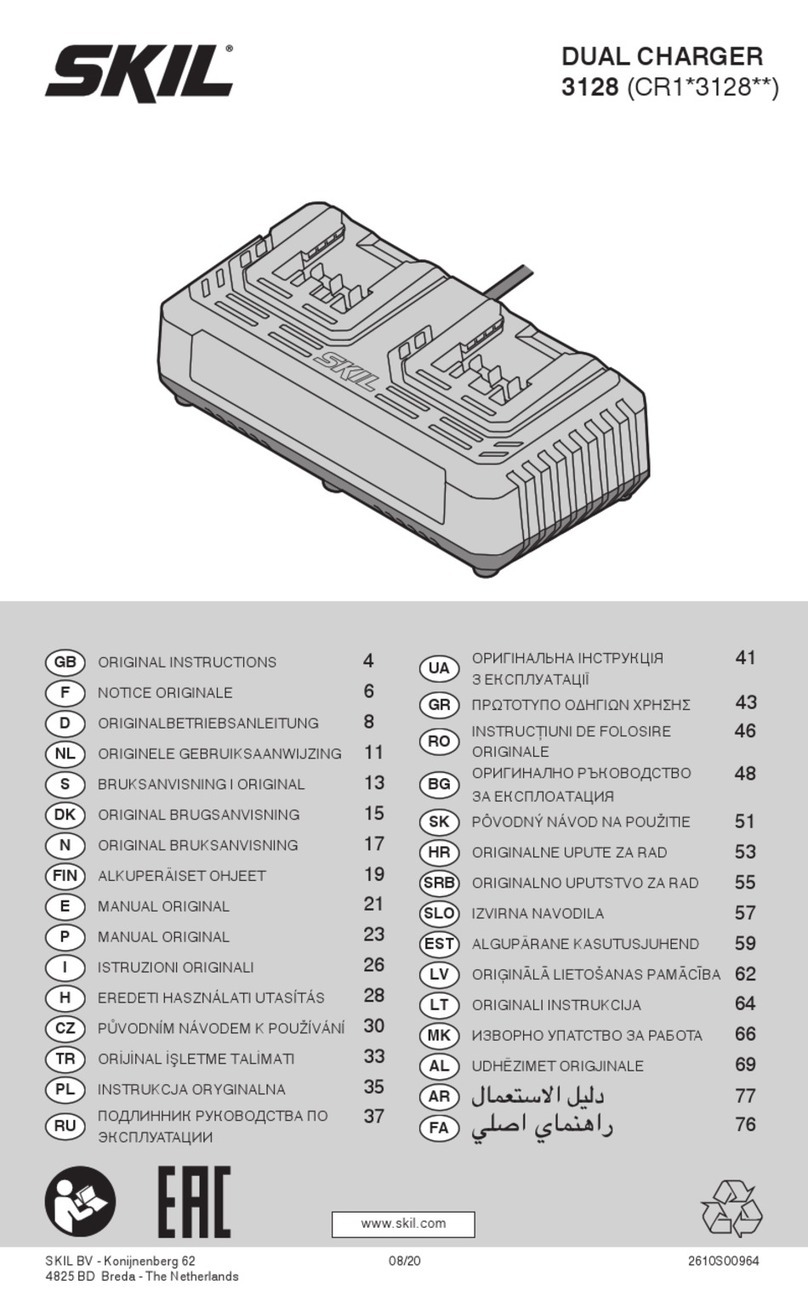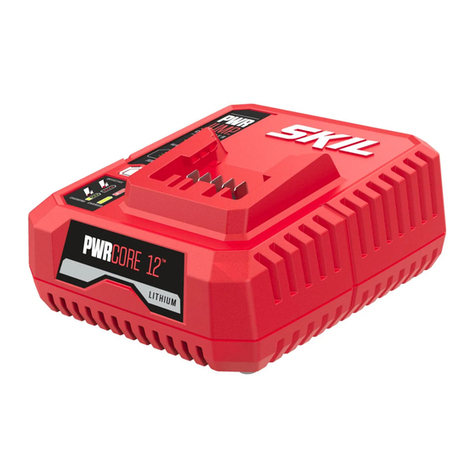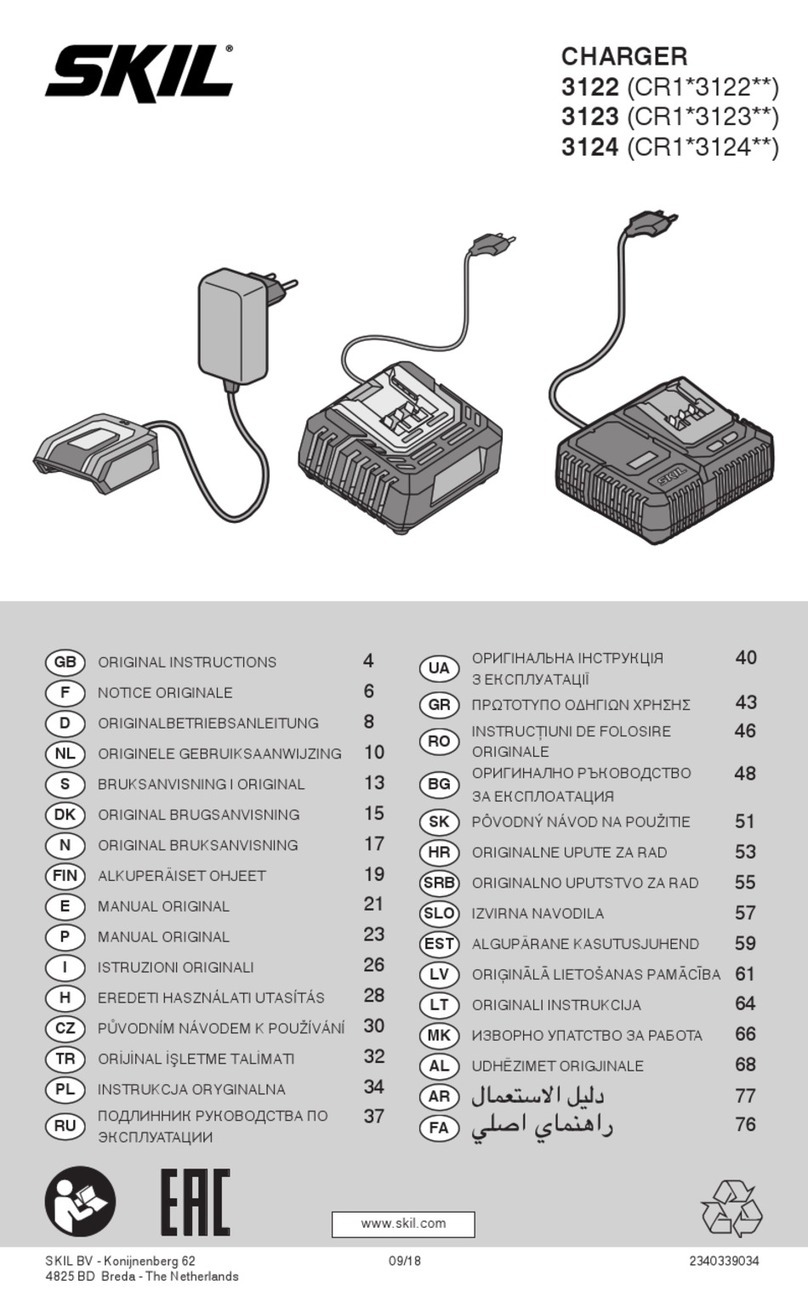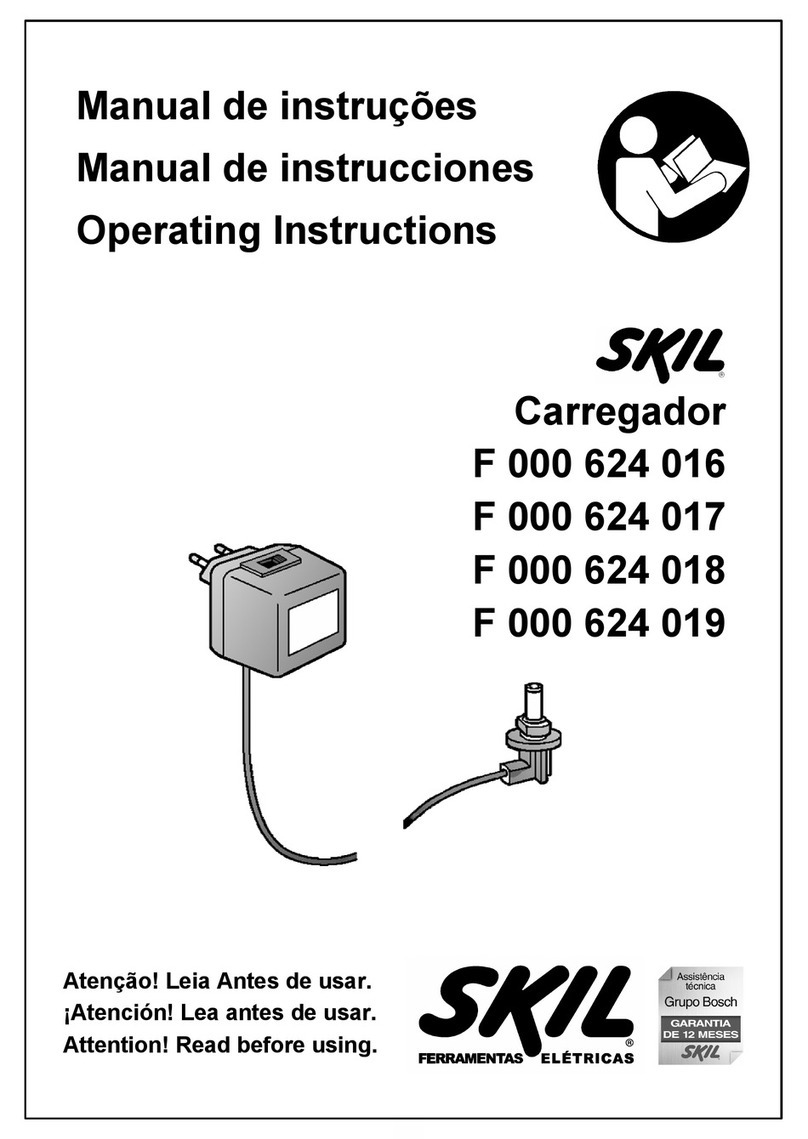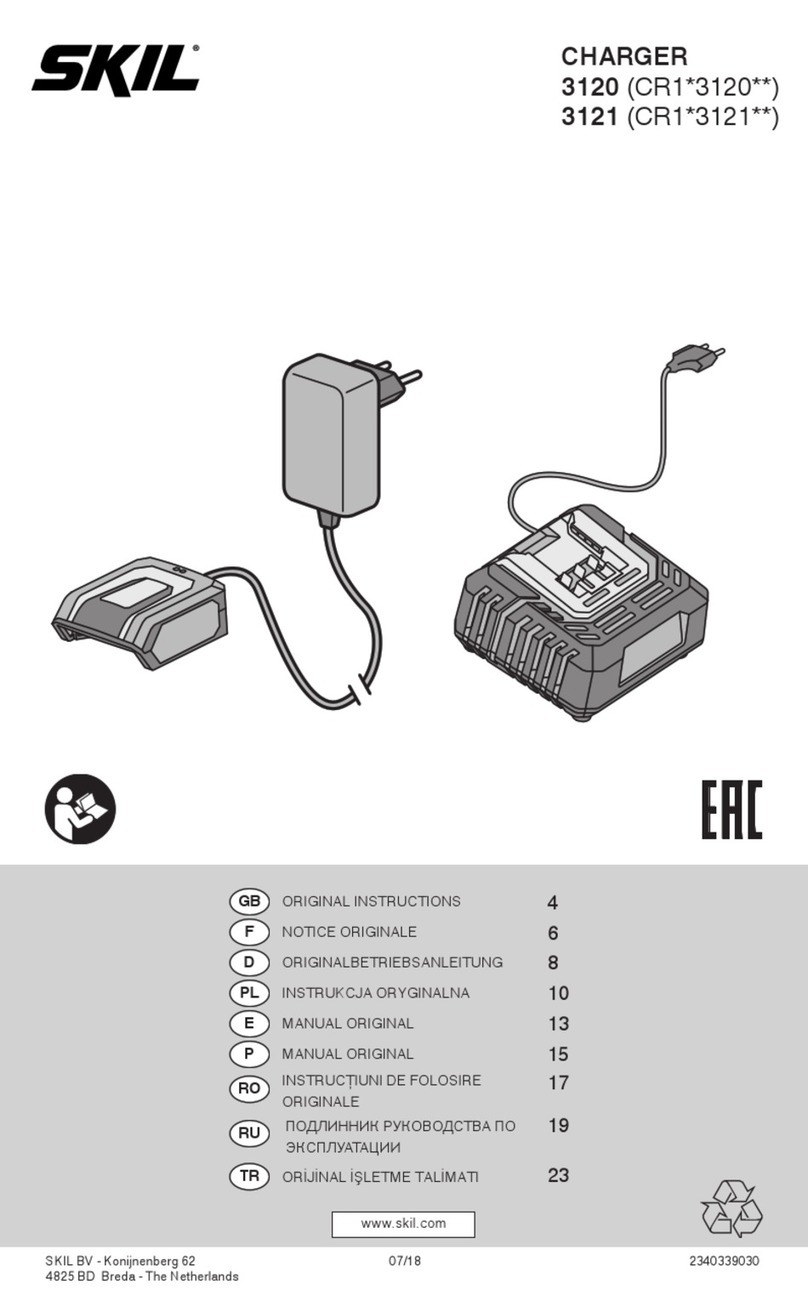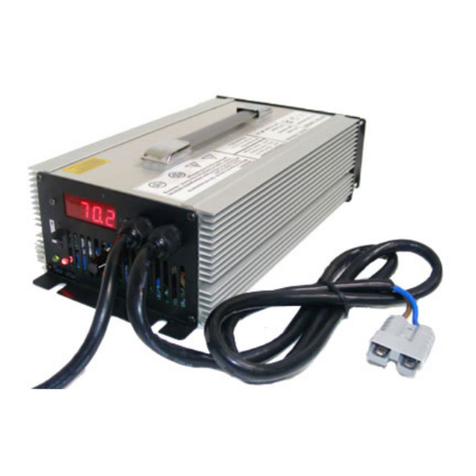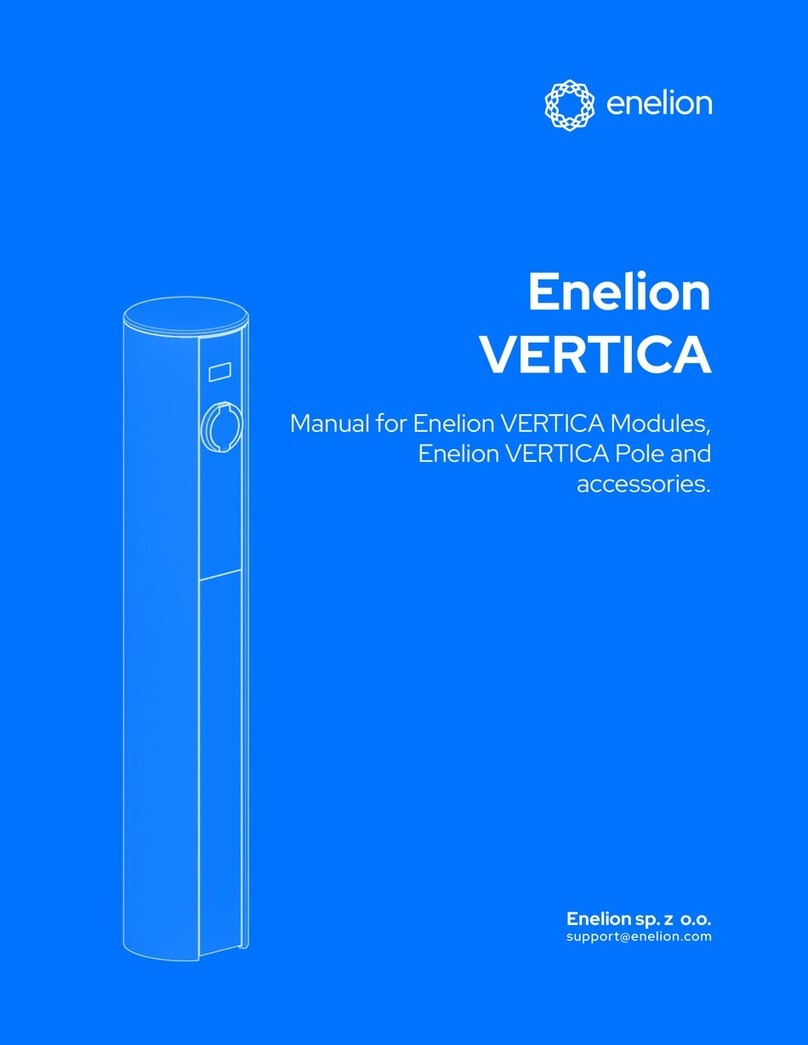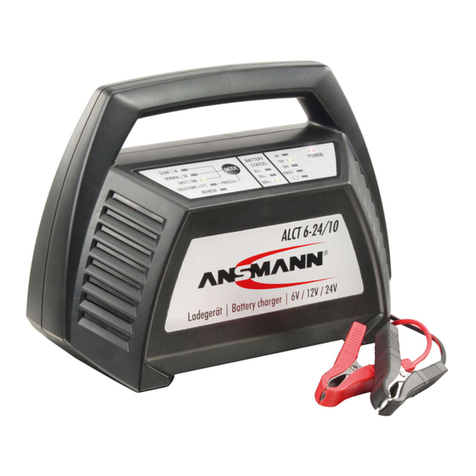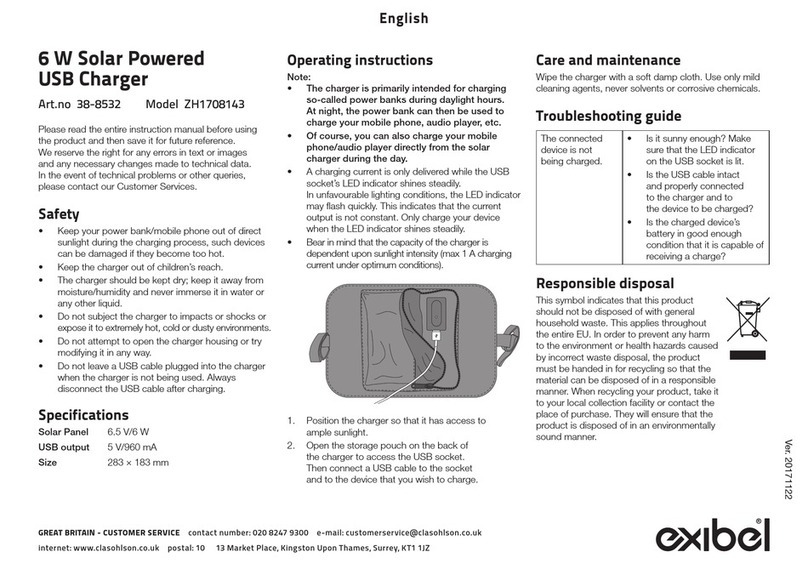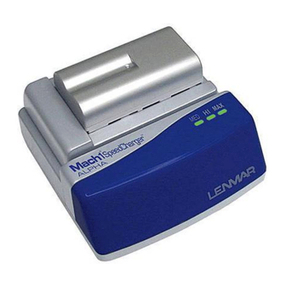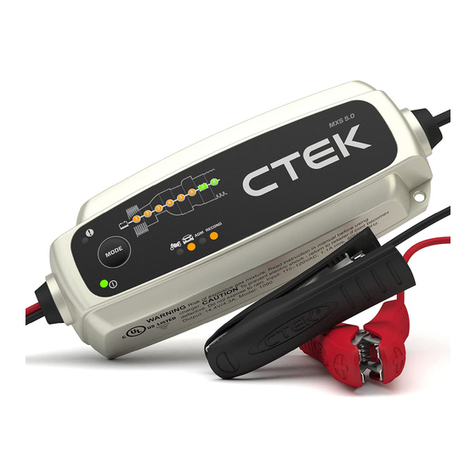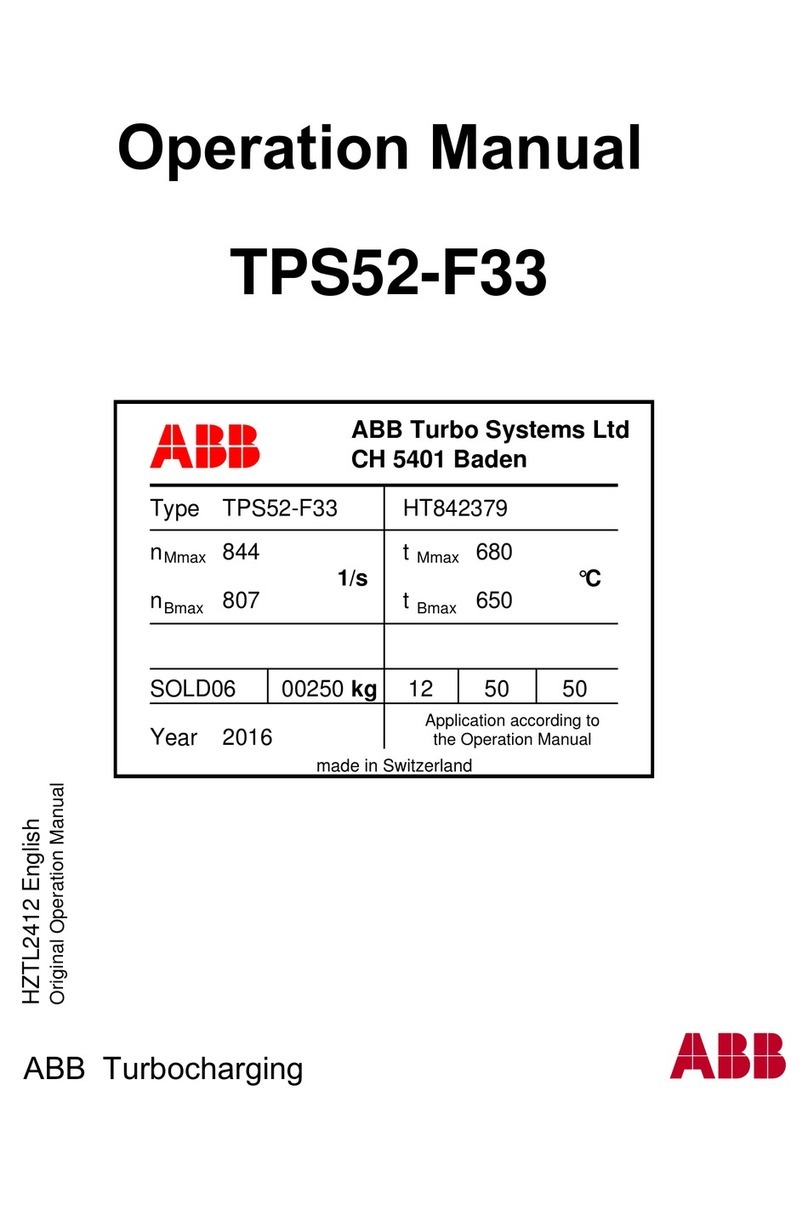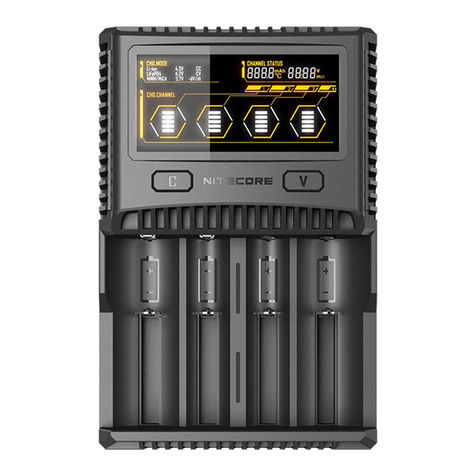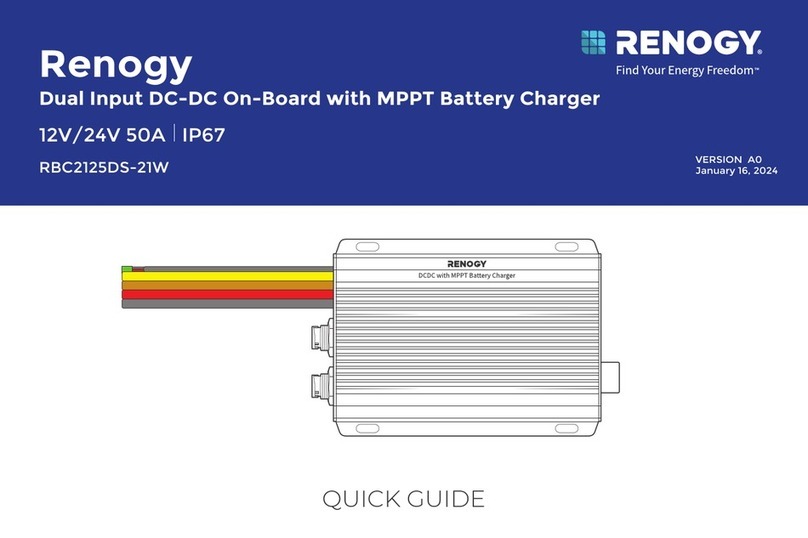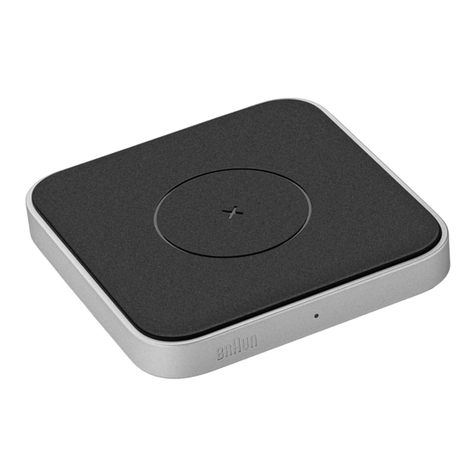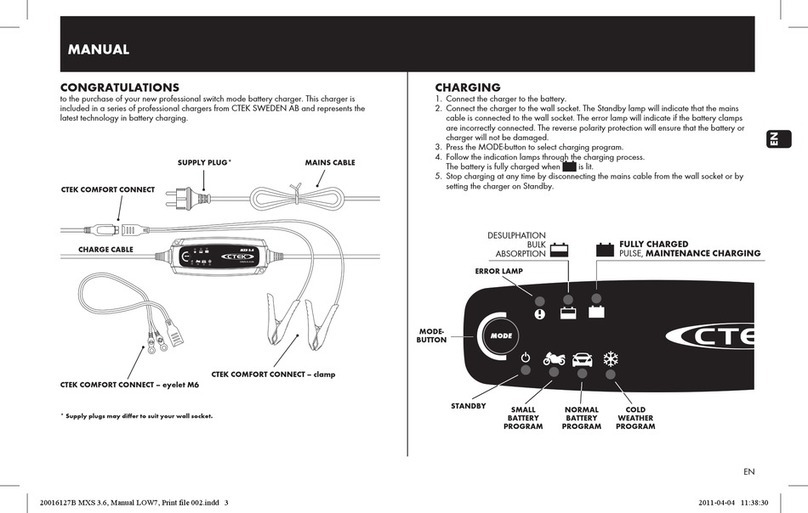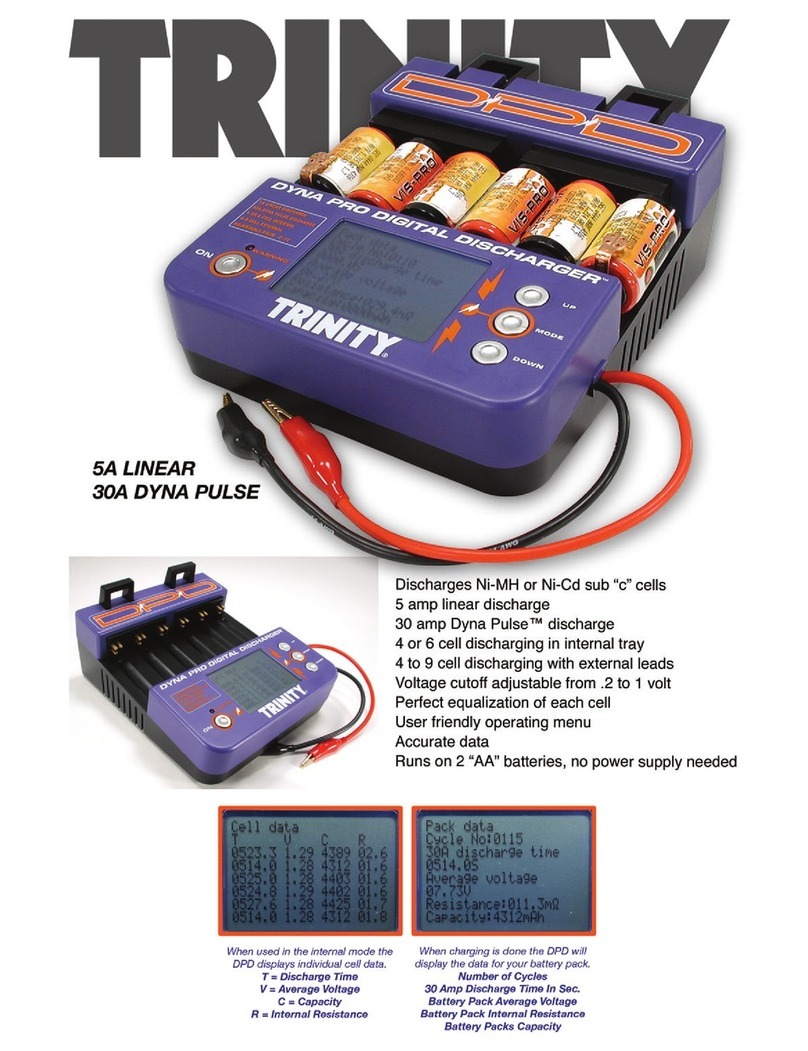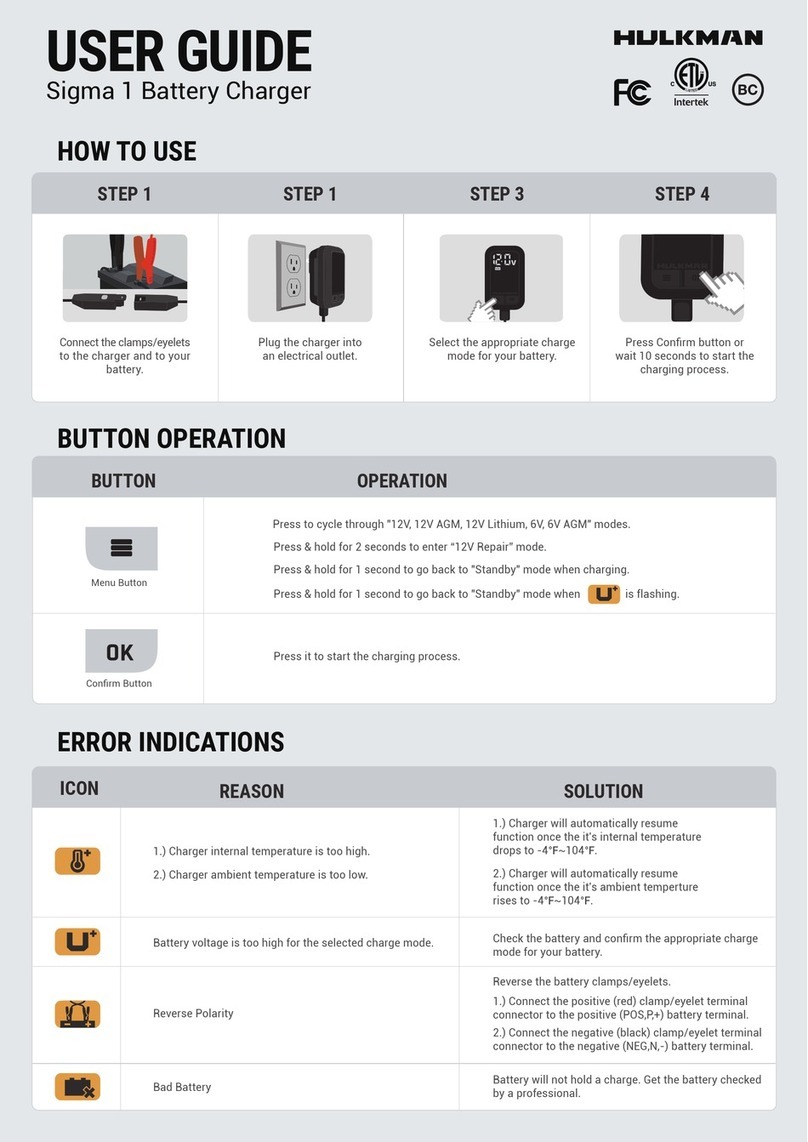
3
IMPORTANT SAFETY INSTRUCTIONS - SAVE THESE
INSTRUCTIONS
DANGER TO REDUCE THE RISK OF FIRE OR ELECTRIC SHOCK, CAREFULLY
FOLLOW THESE INSTRUCTIONS.
CHARGER SAFETY INSTRUCTIONS
This manual contains instructions for battery charger model SC536501. Do not substitute
any other charger.
Before using battery charger, read all instructions and cautionary markings on (1)
battery charger, (2) battery pack, and (3) product using battery.
Charge only SKIL rechargeable batteries listed in the manual. Other types of batteries
may burst causing personal injury and damage.
Charge battery pack within the required temperature range. Store charger and battery
pack in locations where temperature is within the recommended storage temperature
range. This is important to prevent serious damage to the battery cells.
Do not recharge battery in damp or wet environment. Do not expose charger to rain or
snow. Water entering battery charger may result in electric shock or re.
Battery leakage may occur under extreme usage or temperature conditions. Avoid
contact with skin and eyes. The battery liquid is caustic and could cause chemical burns
to tissues. If liquid comes in contact with skin, wash quickly with soap and water. If the liquid
contacts your eyes, ush them with water for a minimum of 10 minutes and seek medical
attention.
Place charger on at nonammable surfaces and away from ammable materials when
recharging battery pack. Carpeting and other heat insulating surfaces block proper air
circulation which may cause overheating of the charger and battery pack. If smoke or melting
of the charger or battery pack is observed, unplug the charger immediately and do not use the
battery pack or charger. Contact customer service immediately.
Keep the cord and charger from heat to prevent damage to housing or internal parts.
Do not allow gasoline, oils, petroleum-based products, etc. to come in contact with
plastic parts. These materials contain chemicals that can damage, weaken, or destroy
plastic.
Make sure cord is located so that it will not be stepped on, tripped over, or otherwise
subjected to damage or stress. Damaged plug and cord may result in electric shock or re.
Disconnect the charger by pulling the plug rather than the cord. Do not operate charger
with damaged cord or plug; have them replaced immediately. Damaged plug or cord may
result in electric shock or re.
Do not insert battery pack in charger if battery pack case is cracked. Using damaged
battery pack may result in electric shock or re.
Do not disassemble charger or operate the charger if it has received a sharp blow, been
dropped or otherwise damaged in anyway. Incorrect reassembly or damage may result in
electric shock or re.
Before each use, check the battery charger, cable and plug. If damage is detected,
do not use the battery charger. Never open the battery charger yourself, take it to a
SKIL Factory Service Center, or qualied serviceman only using original spare parts.
Incorrect reassembly may result in electric shock or re.
Do not touch the uninsulated portion of output connector or uninsulated battery
terminal. There is a risk of electric shock.
Do not use attachment not recommended or sold by SKIL. Using attachments not
recommended may result in electric shock or re.

